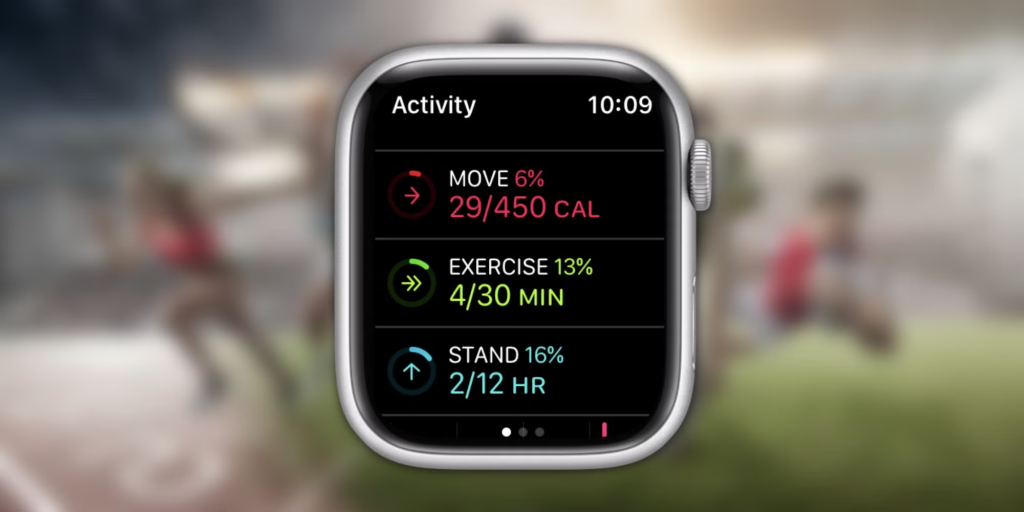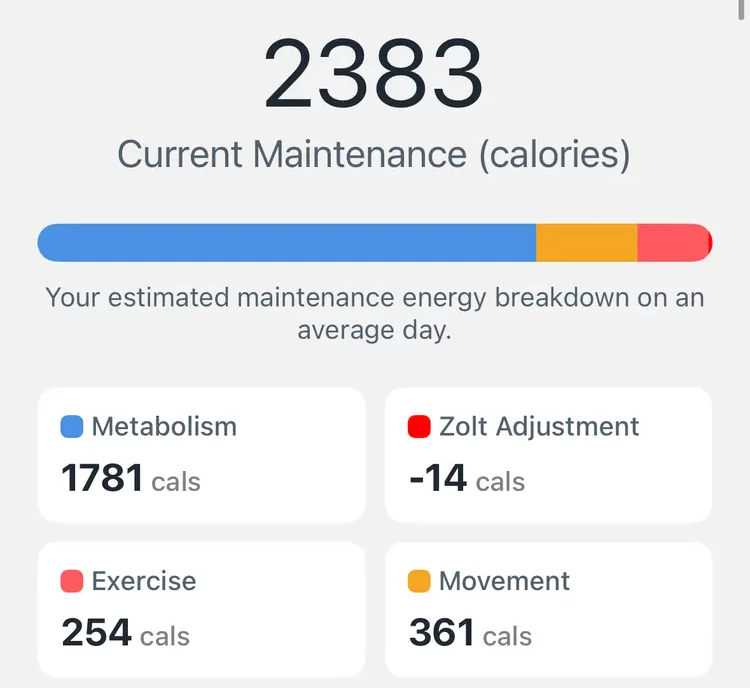The Apple Watch has become one of the most popular fitness trackers in the world, with millions of users relying on its calorie tracking to guide their fitness and nutrition decisions. But just how accurate are those calorie numbers displayed on your wrist? The answer might surprise you.

TL;DR
Multiple peer-reviewed studies show that while the Apple Watch excels at heart rate monitoring (2% error rate), its calorie estimates are often wrong, usually by by 20-40%. The Stanford University study found calorie errors of around 40% for Apple Watch despite it being the most consistent among tested devices. The watch tends to overestimate calories burned, particularly during activities like walking, running, and high-intensity workouts. While useful as a motivational tool for tracking relative activity trends, the Apple Watch should not be relied upon for precise calorie counting or nutrition planning without additional verification methods.
How Apple Watch Estimates Calories
Apple Watch uses a sophisticated combination of sensors, algorithms, and personal data to estimate calories burned throughout the day. Understanding this process helps explain both its strengths and limitations.
The Technology Behind the Numbers
The Apple Watch uses multiple sensors working in concert:
Photoplethysmography (PPG) Heart Rate Sensor: The optical heart sensor on the back of the watch uses infrared and green LEDs paired with photodiodes to measure heart rate through blood volume changes in your wrist. During workouts, the green LEDs activate for better motion tolerance, while infrared LEDs monitor heart rate in the background throughout the day.
Motion Sensors: A three-axis accelerometer measures acceleration in three directions, while a three-axis gyroscope detects rotational movement. These sensors help identify different types of activities and movement intensity.
Environmental Sensors: The barometer detects elevation changes and helps estimate stairs climbed, while the GPS receiver (in supported models) tracks distance and speed during outdoor activities.
Personal Data Integration: The watch uses your age, sex, height, weight, and detected fitness level (VO2 max) to personalize calorie calculations. (Apple’s official technical documentation)
The Algorithm Process
Apple’s proprietary algorithms process this sensor data through several steps:
- Activity Classification: Machine learning models trained on thousands of hours of movement data identify what type of activity you’re performing (walking, running, cycling, etc.)
- Metabolic Equivalent (MET) Calculation: Based on the identified activity and your personal metrics, the watch calculates your metabolic rate
- Calorie Conversion: The system combines METs with your weight and activity duration to estimate calories burned
- Basal vs. Active Calories: The watch separates total calories into basal calories (energy needed for basic bodily functions) and active calories (additional energy from movement)
Research on Apple Watch Accuracy
Multiple peer-reviewed studies have examined how well the Apple Watch estimates calorie expenditure, with concerning results.
The Stanford Study: A Landmark Analysis
The most comprehensive study came from Stanford University in 2017, which evaluated seven popular fitness trackers including the Apple Watch. The research, published in the Journal of Personalized Medicine, involved 60 participants performing various exercises while wearing multiple devices.
Key Findings:
- Heart Rate Accuracy: The Apple Watch performed best among all tested devices with only a 2% median error rate in heart rate measurement
- Calorie Estimation Problems: Despite excellent heart rate tracking, calorie estimates showed significant errors of around 40% for the Apple Watch
- Comparative Performance: While the Apple Watch had the most consistent calorie tracking among tested devices, even the “most accurate” tracker (Fitbit Surge) was off by 27% on average
Clinical Validation Studies
A 2019 study published in the Journal of Medical Internet Research tested the Apple Watch specifically in patients with cardiovascular disease during cardiopulmonary exercise testing. The results showed:
- Heart Rate Accuracy: Clinically acceptable accuracy with small bias compared to ECG monitoring
- Energy Expenditure Issues: Systematic overestimation of calories by an average of 30.47 calories per test, with a mean absolute percentage error of 114.72%
Recent Research Findings
More recent studies continue to show similar patterns:
- A 2022 European Journal of Sport Science study comparing the Apple Watch 6 with other devices found it remained the most accurate for heart rate but continued to struggle with energy expenditure
- Studies consistently show Apple Watch calorie estimates can be off by 10-25% or more, with accuracy varying significantly by activity type and individual characteristics
Why Apple Watch Calorie Estimates Are Often Wrong
Despite sophisticated technology, several fundamental challenges limit the accuracy of wrist-based calorie estimation.
Technical Limitations
Indirect Measurement: Unlike heart rate, which the sensors measure directly, calories must be estimated through complex algorithms. The watch doesn’t actually measure energy expenditure—it predicts it based on proxy signals.
Motion Artifacts: Movement during exercise can interfere with heart rate readings, especially during high-intensity or irregular activities. This affects the primary input for calorie calculations. (Apple’s technical documentation)
Activity Type Variations: The Apple Watch performs well for steady-state cardio activities like walking and running but struggles with:
- High-intensity interval training (HIIT)
- Strength training and weightlifting
- Sports with irregular movements (tennis, boxing)
- Swimming (due to water interference)
Individual Physiological Differences
Metabolic Variability: People burn calories at different rates even during identical activities due to factors like:
- Muscle mass and body composition
- Metabolic efficiency
- Fitness level
- Environmental conditions
Understanding your individual metabolic rate is crucial for accurate calorie tracking. This is where advanced TDEE calculation methods become valuable, as they can provide more personalized baselines than generic wearable estimates.
Demographic Factors: Research shows accuracy decreases for:
- Men compared to women
- Larger individuals (higher BMI, larger wrist circumference)
- People with darker skin tones (due to light absorption by melanin)
Environmental Challenges: Cold temperatures, swimming, and poor watch fit can all reduce sensor accuracy and affect calorie estimates.
Algorithm Limitations
Proprietary Black Box: Apple doesn’t disclose its exact calorie calculation algorithms, making it impossible to understand or address specific limitations.
Training Data Bias: The machine learning models are trained on specific populations and may not generalize well to all users or activities.
One-Size-Fits-All Approach: While the watch personalizes estimates using basic metrics, it cannot account for individual metabolic differences or exercise efficiency.
The Magnitude of Inaccuracy
Studies consistently show Apple Watch calorie estimates can be significantly off:
- Overestimation is Common: Most research indicates the Apple Watch tends to overestimate calories burned, sometimes by 20% or more
- Activity-Dependent Accuracy: Errors are typically:
- Smallest (5-10%) for steady walking and running
- Moderate (10-20%) for cycling and other steady-state activities
- Largest (20%+ or higher) for strength training, HIIT, and irregular activities
- Individual Variation: The same person doing identical workouts might see different calorie estimates due to environmental factors, watch fit, or sensor variations
Implications for Users
For Fitness Tracking
The limitations of Apple Watch calorie tracking highlight the importance of comprehensive health monitoring that goes beyond simple calorie estimates. Modern health tracking involves understanding the relationship between sleep quality, recovery metrics, and daily energy expenditure.
- Relative Trends Matter More: Focus on day-to-day patterns rather than absolute numbers
- Don’t Base Nutrition Solely on Watch Data: Using calorie estimates to determine food intake can lead to overeating
- Understand Your Activities: Be aware that certain workout types are less accurately tracked
- Consider Multiple Metrics: Combine calorie data with sleep scores, recovery indicators, and activity patterns for a complete picture
For Weight Management
Given the significant inaccuracies in wearable calorie tracking, successful weight management requires more sophisticated approaches. Understanding the difference between BMR vs TDEE and using dynamic TDEE algorithms can provide more accurate baselines for nutrition planning than relying solely on wearable estimates.
- Conservative Approach: Assume calorie estimates are on the high side
- Track Multiple Metrics: Combine calorie data with other measures like resting heart rate, sleep quality, and subjective energy levels
- Professional Guidance: Consult healthcare providers for serious weight management goals
- Adaptive Methods: Consider using systems that adjust calorie targets based on actual weight changes rather than estimated expenditure
Improving Accuracy
While you can’t fix the fundamental limitations, certain practices can improve estimates:
Setup and Calibration
- Keep Personal Data Current: Update weight, height, and other metrics regularly (Apple Support guidance)
- Proper Fit: Wear the watch snugly but comfortably, with the sensor in contact with skin
- Enable Location Services: Allow GPS access for outdoor workouts
- Calibrate Your Watch: Complete outdoor walks to help the watch learn your stride and fitness level
Usage Best Practices
- Select Correct Workout Types: Choose the most appropriate activity setting before exercising
- Consistent Wear: Wear the watch regularly to improve background heart rate data
- Environmental Awareness: Understand that cold conditions, swimming, and certain activities may reduce accuracy
Supplementary Tracking Methods
Given the limitations of wearable calorie tracking, many users benefit from complementary approaches:
- Food Logging: Track actual calorie intake alongside estimated expenditure
- Body Weight Trends: Monitor weight changes over time to validate calorie balance
- Sleep and Recovery Monitoring: Poor sleep consistency can affect metabolic rate and energy expenditure
- Comprehensive Health Apps: Use platforms that integrate multiple data sources for more accurate insights
The Future of Calorie Tracking
As wearable technology evolves, we’re seeing improvements in how devices handle the complex relationship between activity, recovery, and energy expenditure. Future developments may include:
- Multi-Modal Sensing: Combining wearable data with environmental and behavioral factors
- Personalized Algorithms: Machine learning models that adapt to individual metabolic patterns over time
- Integration with Nutrition Data: Systems that learn from actual food intake and weight changes to improve expenditure estimates
Some health platforms are already implementing these approaches, using adaptive algorithms that learn from individual patterns rather than relying solely on generic population data.
The Bottom Line
The Apple Watch represents impressive engineering and provides valuable health insights, but its calorie estimates should be taken with significant skepticism. While it excels at heart rate monitoring and activity tracking, the fundamental challenges of estimating energy expenditure from wrist-worn sensors mean calorie numbers are often substantially inaccurate.
For most users, the Apple Watch serves best as a motivational tool and relative activity tracker rather than a precise calorie counter. Its strength lies in encouraging movement, tracking trends, and providing consistent (if not always accurate) feedback about your activity levels.
The key to successful health and fitness tracking lies in understanding these limitations and using a comprehensive approach that considers multiple factors including sleep quality, recovery status, and individual metabolic patterns. By combining wearable data with more sophisticated tracking methods, users can make more informed decisions about their health and energy management.
As wearable technology continues to evolve, future devices may improve calorie estimation accuracy. However, until then, users should understand the limitations and use calorie data as one piece of a broader health and fitness picture, rather than the definitive measure of their energy expenditure.
True energy expenditure can best be found through bodyweight and food logging. Zolt provides a world-class, dynamic energy expenditure (TDEE) algorithm to truly understand reach your goal weight and understand how correct, or incorrect, your Apple Watch calories are.

The research is clear: while the Apple Watch is among the best consumer devices for heart rate monitoring, its calorie estimates remain flawed. Understanding these limitations helps users make more informed decisions about their health and fitness journeys.
Sources and References
Primary Research Studies:
- Stanford University Study (2017) – Journal of Personalized Medicine
- Apple Watch Accuracy in Cardiovascular Patients (2019) – Journal of Medical Internet Research
- European Journal of Sport Science Study (2022)
Technical Documentation:
- Apple’s Official Heart Rate and Calorimetry Technical Paper (November 2024)
- Apple Support – Get Accurate Measurements
- Apple Support – Calibration Guide
Analysis and Commentary: